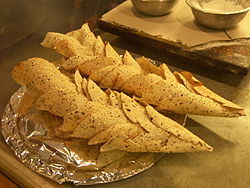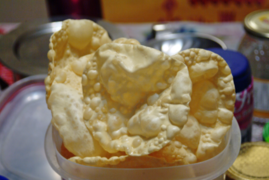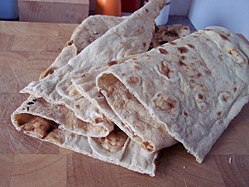A papadam, also known as a poppadom or papadum among other transliterations, is a snack that originated in the Indian subcontinent. Dough of black gram bean flour is either deep-fried or cooked with dry heat (flipped over an open flame) until crunchy. Other flours made from lentils, chickpeas, rice, tapioca, millet or potato are also used. Papadam is typically served as an accompaniment to a meal in India, Pakistan, Bangladesh, Nepal, Sri Lanka and the Caribbean or as an appetizer, often with dips such as chutneys, or toppings like chopped onions and chili peppers.













